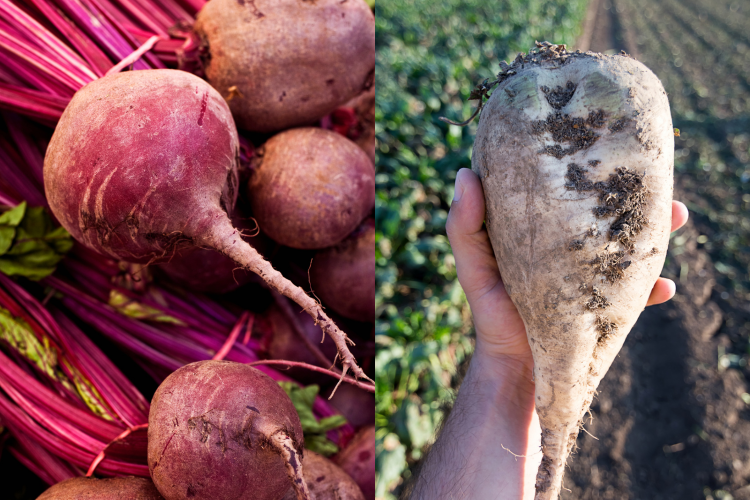Tire Ballast
•
2
min read

Sugar beets don’t quickly spring to mind when Americans think about their favorite — or even acceptable — side dishes. Table beets might be coming to mind for you, with their rich red coloring, but sugar beets look more like a potato and are white inside! Sugar beets serve a much more important role than you think, finding their way into everything from pickle jars to sugar bags to tractor tires. And their agricultural history is complex.

With a long history of sugar production from this sturdy vegetable, it’s no wonder that the United States would take advantage of its many uses.
According to the Sugar Association:
“Sugar is harvested from sugar beets, root vegetables that grow in cooler climates, and sugar cane plants, tropical grasses that grow up to 20 feet tall. Sugar beet and sugar cane [are] go-to sources for sugar because they have the highest percentage of sucrose of all plants. For both, the refining process removes all impurities and the surrounding plant matter, leaving only pure sucrose.”
According to US Sweetener www.ussweeteners.com 58% of the sugar produced in the U.S. comes from sugar beets grown in cold climates like Minnesota, North Dakota and Michigan. In an article by SafeRack, a national loading rack design and manufacturing company, “Sugarcane is processed with bone char to make it white, and sugar from sugar beets is naturally white.”
To extract sugar from beets, producers wash, soak and slice the vegetables before performing a de-sugaring process through osmosis. This de-sugaring happens twice before the final crystalized sugar is extracted and a byproduct — raffinate — is created.
Rim Guard utilizes this liquid raffinate as the base of its Beet Juice Tire Ballast. Upon receiving the raffinate, Rim Guard follows a proprietary formula adds to create the final product: a sustainable, freeze protected, highly effective, heavy ballast that won’t harm the people who handle it, the environment around it or the animals that may accidentally ingest it should your tractor tire get punctured and the ballast leaks or spills.
Rim Guard Beet Juice Tire Ballast provides the advantages of liquid ballast (a freeze point of -35F and weight of 10.7 gallons) without the risks presented by other options like chlorides, windshield washer fluid and methanol. Non-corrosive, non-toxic, biodegradable and water-soluble, Beet Juice Tire Ballast is safe for machinery, including antique equipment. So instead of disparaging this otherwise unremarkable vegetable, consider giving beets a second look.
If you have questions, concerns, or want other helpful hints about Rim Guard Beet Juice Tire Ballast, please call us at 616-608-7745 or email info@rimguardsolutions.com.
To find your closest Rim Guard dealer visit https://www.rimguardsolutions.com/find-a-dealer.